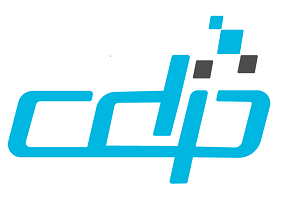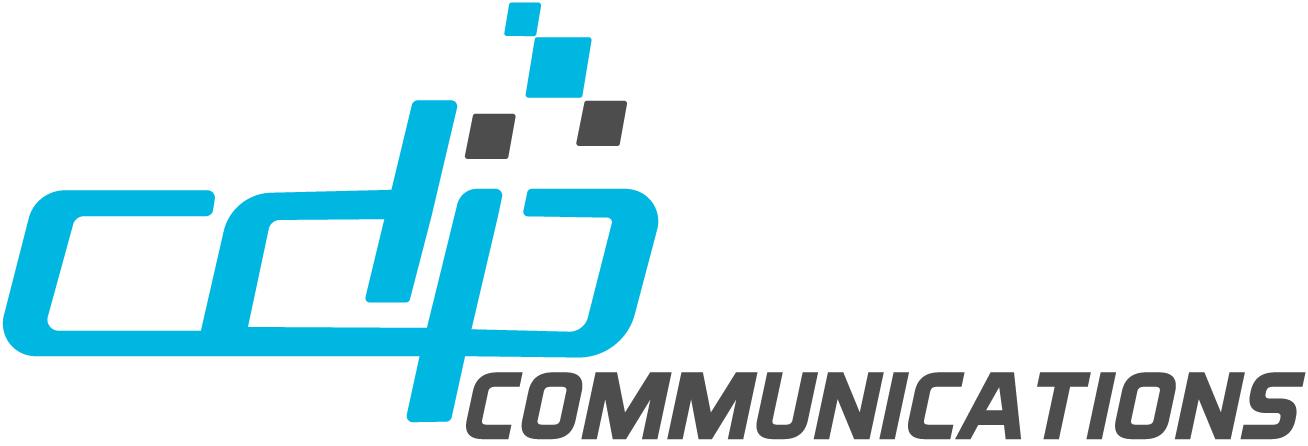Happy New Year!
Your organization’s 2024 New Year’s Resolution includes digital and document accessibility as a top priority, and if it doesn’t… it really should. This is where the rubber meets the road for personal and professional goals. Your New Year’s Resolution is the starting line for reaching those targets and taking those crucial steps toward success and growth. This is where plans and purpose intersect. Web accessibility, ADA, Section 508, AODA, WCAG and PDF/UA compliance have emerged as crucial elements for businesses. This article explores the multifaceted advantages of prioritizing web and document accessibility, both ethically and from a business standpoint.
Commitment to Diversity, Equity, and Inclusion (DEI)
Putting digital and document accessibility as a priority serves as a tangible demonstration of respect toward the rights and dignity of individuals with disabilities and seniors. It serves as a testament to an organization’s unwavering commitment to fostering diversity, equity, and inclusion (DEI), a stance increasingly cherished by clients, workforce, and stakeholders.
Making BIG improvements to User-Friendliness, Customer Satisfaction and Experience
That said, accessible websites yield benefits that extend beyond the demographic of users with disabilities. By refining user-friendliness, navigation, comprehension, and interactivity, you elevate the holistic user experience, nurturing customer contentment and allegiance. The very same goes for the cyclical and enterprise documents that you send to your customers, clients and constituents. Those digital documents need to be accessible as a priority, and the safest bet is to ensure they meet the established and trusted standard of PDF/UA. With free checkers like PAC 2024 available, you can spotcheck any document and find out if what you send people in the form of bills, letters, notices, statements, invoices and more is accessible and compliant.
Elevating Search Engine Optimization (SEO)
Reach is important to any business. You naturally want to reach your current client base and make things easy for them, but also reach those who aren’t doing business with you yet or are ‘shopping around’. Conforming to ADA, AODA and WCAG compliance benchmarks can substantially amplify the search engine optimization (SEO) of your website. Clear-cut headings, alternative text, captions, and meticulously structured markup not only augment accessibility but also bolster visibility to search engines, thereby broadening your audience base. Being found makes a huge difference. Accessibility benefits everyone, but this unexpected benefit to your business can provide a genuine edge where it matters.
Speaking of Reach… Why Digital and Document Accessibility Must Become a Priority
Consider this: within the U.S. alone, a staggering 61 million individuals live with disabilities, accompanied by 71 million Baby Boomers, wielding a collective $548 billion in discretionary spending. Now extrapolate these figures and consider what this means globally. As individuals age, challenges that arise specific to vision, hearing, cognition, and motor skills become more prevalent.
Baby Boomers represent the pioneering cohort of digital seniors. Catering to and planning strategically for engaging meaningfully with this demographic not only broadens your market scope but also bolsters their digital engagement with you, often over others.
Innovation Alert for 2024: The Emergence of AIO – Artificial Intelligence Optimization
As the landscape shifts from conventional search engines to AI-driven platforms such as Bing and ChatGPT, the role of Artificial Intelligence Optimization becomes pivotal. These advanced systems, in many ways akin to assistive technologies, encounter analogous access impediments. Adhering to WCAG not only aids these technologies but also redefines the role of AIO in digital marketing, amplifying the worth of WCAG compliance.
Understanding WCAG for Success
The Web Content Accessibility Guidelines (WCAG) serve as the benchmark for digital accessibility across the U.S. and Canada. These guidelines have been embraced, in part or entirety, by numerous countries with laws safeguarding individuals with disabilities. The standards revolve around four fundamental principles: Perceivable, Operable, Understandable, Robust… or ‘POUR’ for short.
The Web Content Accessibility Guidelines (WCAG) categorize three conformance levels to guarantee website accessibility for individuals with disabilities. These levels encompass:
Level A (Baseline):
This represents the fundamental tier of web accessibility.
Level A integrates essential accessibility features imperative for website inclusion.
Key requisites encompass offering text alternatives for non-text content (e.g., images), ensuring basic navigation via keyboard, and using straightforward language or providing explanations for uncommon terms.
Failing to meet Level A standards may render some users unable to access information on a website.
Level AA (Intermediate):
This tier encompasses all Level A criteria and introduces additional requisites to elevate accessibility.
Widely acknowledged as the industry standard for most websites, Level AA is frequently the compliance target due to its equilibrium between implementation complexity and accessibility enhancement.
Crucial requirements at this level include furnishing alternatives for audio and video (e.g., captions), crafting content adaptable to diverse presentations without losing information or structure and guaranteeing adequate contrast between text and background for clear visibility.
Level AAA (Pinnacle):
This level encompasses all criteria from Levels A and AA, incorporating even more stringent requirements.
Level AAA standards are the most demanding and may pose challenges in implementation for certain content types.
While not obligatory for entire websites, Level AAA may be pertinent for specific content or resources within a site.
It’s imperative to recognize that achieving full compliance with higher levels inherently entails fulfilling all criteria from lower levels. Although Level AAA sets the pinnacle for accessibility standards, it may not be pragmatic or indispensable for all websites. Most organizations target Level AA compliance to meet legal mandates and ensure heightened accessibility for users with disabilities.
The Legal Landscape (…and avoidance of litigation and penalties)
ADA Title III
Recently, ADA Title III: Digital Expansion came to be – and this means that the online realm is now seen as a crucial extension of the necessary considerations that need to be made for all that state and local governments and businesses that are open to the public. This extension to digital spaces like websites, web apps, and mobile apps exists to level the playing field for the same reasons that considerations for accessibility in the physical, tactile world were enacted in years gone by. Equal access and enjoyment for all are at the heart of this digital expansion because shopping no longer just happens at malls, doctor appointments are now oftentimes virtual, and communication extends well beyond face-to-face interactions. The accessibility ramps of yesterday need their counterparts in today’s online and virtual renovations and digital accommodations and considerations.
Section 508 Compliance:
Federal Requirements are clear, and the impact and implications on federal agencies and institutions are real. But the benefit to everyone is equally undeniable, and the positive effects growing. And, as importantly, where accessibility falls short, there can be legal repercussions. The Web Content Accessibility Guidelines (WCAG) serve as the benchmark for digital accessibility across the U.S. These guidelines have been embraced, in part or entirety, by numerous countries with laws safeguarding individuals with disabilities. The standards revolve around four fundamental principles: Perceivable, Operable, Understandable, and Robust.
Higher Ed & Contractors
Higher Ed & Contractors: The same importance for educational institutions and contractors has come into focus as well. While some higher education institutions are making great strides, digital and document accessibility remains a struggle. Especially where efforts are piecemeal or not centrally administered and monitored. Students with disabilities are oftentimes underserved, or made to wait. They are unfairly placed at the back of the line for course materials, texts, accessible content and more to be made accessible. This can leave them in an unfair position versus their peers. It shouldn’t have to take advocacy groups and litigation to muscle in and force accessibility into the fore… If the right protocols and in-house processes are in place and matched with effort, no one will be left behind. Further, lawsuits and civil action can be avoided.
Laws at the state level:
Laws at the state level: As seen in New York state with expanded requirements at the agency level as well as the broader implications of California’s Unruh Act, should be a clear signal. But not only to those inside those jurisdictions but a guideline for everyone everywhere. If is important enough for laws to be enacted to benefit everyone in those states, the benefits can be realized everywhere else. New York mandates WCAG 2.1 AA compliance for agencies and contractors offering websites. While New York’s regulations pertain solely to state government ICT, California’s Unruh Act encompasses a broader spectrum.
AODA & the Accessible Canada Act (ACA)
Legislation across Canada including the AODA, the Accessible Canada Act (ACA) and newly enacted laws across many provinces contain not only carrots but sticks. Canada, Australia and many countries worldwide have put in place their very own legislative acts specific to digital accessibility. Each features adherence to current WCAG standards as the requirement for compliance. European accessibility laws have come into play too, with more deadlines on the very near horizon. With these important deadlines looming, there is little time to align digital content, communications, and technology. Businesses are moving now to acquire the necessary scans, manual audits and software to not only find but solve the accessibility issues found.
Enterprise Documents
Banks, Insurance companies, Utilities, Airlines, Healthcare providers, Governments and many others send out cyclical and enterprise documents. Although often overlooked, these also need to be accessible and compliant. They need to be machine-readable. Clients and constituents alike using assistive technology rely on these organizations to not only keep them informed and engaged as consumers, but safe and secure in their investments, and their everyday lives.
Conclusion
In conclusion, web accessibility is not just a legal requirement. It’s a gateway to inclusivity and success in the digital realm. By embracing compliance as your 2024 New Year’s Resolution with the existing laws and standards, businesses can navigate the legal landscape. They can enhance user experience. They can unlock new opportunities for growth, elevation of brand, and customer success and satisfaction. Make Digital and Document Accessibility your #1 priority for 2024.
CDP Communications can help. With powerful approaches that combine manual and automated audits and reporting, toolsets and software, support, training and solutions for digital and document accessibility, we have your back every step of the way.

Not sure if your existing documents are accessible or not? We will evaluate them for free! It’s easy. Upload a file and we will test it for you.
Frequently Asked Questions (FAQs)
Q: Is digital and document accessibility only about compliance with laws?
A: No, it goes beyond legal obligations; it’s about creating an inclusive online space.
Q: How does web accessibility impact SEO rankings?
A: Digital Accessibility practices contribute to improved SEO, expanding online visibility.
Q: What role does AI play in ensuring web accessibility?
A: AI, like ChatGPT, is affected by accessibility barriers. This emphasizes the need for compliance.
Q: Can small businesses afford the cost of web accessibility auditing?
A: Costs vary, but investing in accessibility is an investment in the business’s future. Doing nothing or using a ‘wait-and-see’ approach is no longer an option.
Q: Why should businesses make digital and document accessibility a priority for digital seniors?
A: Catering to digital seniors expands the market immensely, supports their engagement and creates tremendous business advantage




